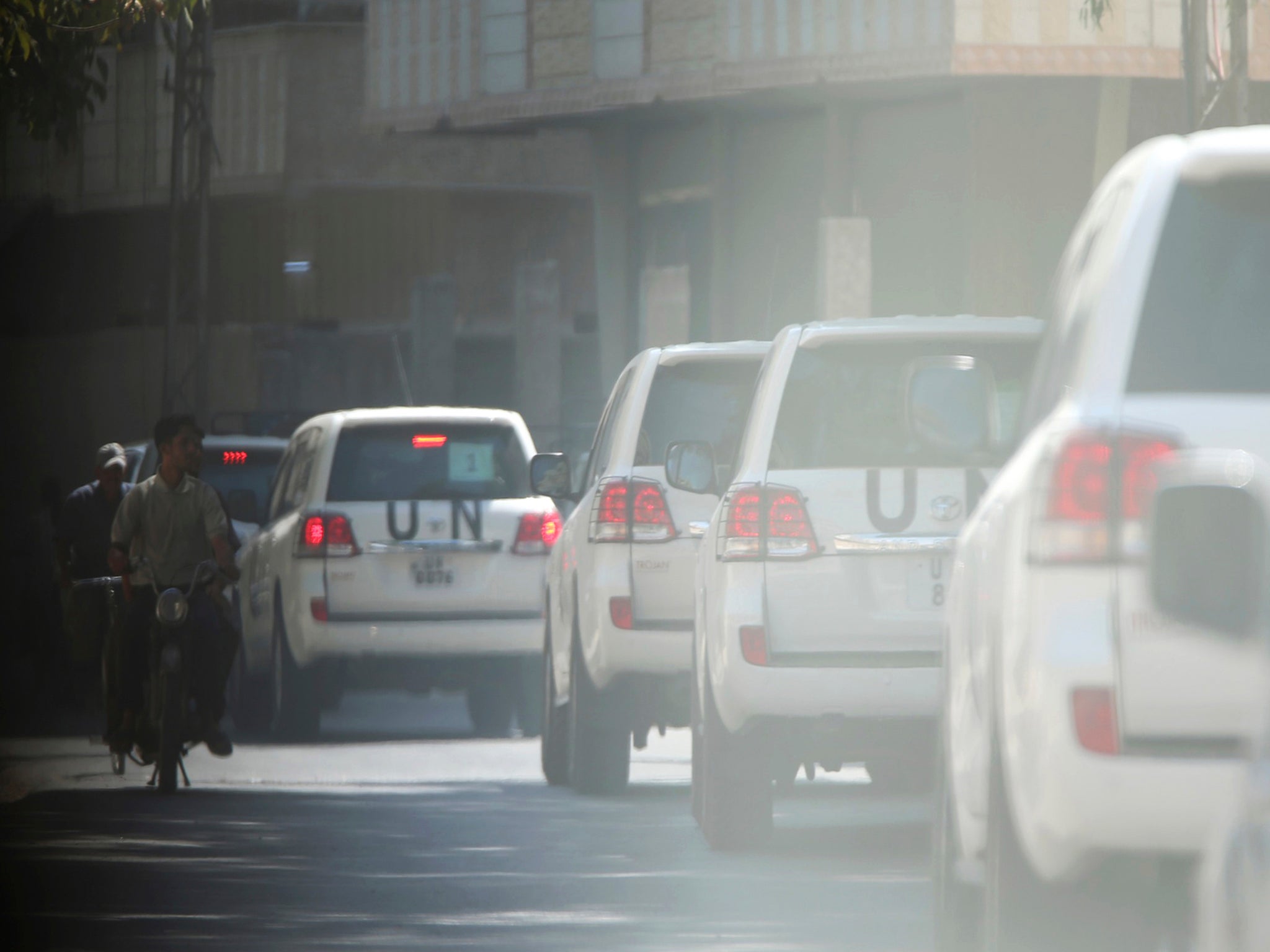Syria chlorine attack: UN Security Council members 'moved to tears' by images of dying women and children
Closed-door session was addressed by Syrian doctor taken out of the country by US government

Members of the UN Security Council were reportedly moved to tears after being shown images of civilian victims of alleged chlorine attacks in Syria. Most of the victims were said to be women and children
A Syrian doctor who treated victims from a recent alleged attack and who was brought to the US by the authorities in Washington, addressed members of the council and presented a video that contained images of dying children,
Reports said the footage shown at the private briefing included images taken during a suspected attack on his town in Sarmin in Idlib province on March 16. He showed images of three dying children aged one to three and the efforts to revive them, the Associated Press said.
“Everyone smelled bleach-like odours and heard the sound of helicopters,” the doctor, Mohamed Tennari, later told reporters after showing them the video. He said most of the victims were women and children.
The US and other council members have repeatedly blamed the Syrian government for such attacks, despite denials from Damascus. Earlier this year, the US and Britain hosted an exhibition of image said to have been taken inside Syrian jails.
In August of 2013, UN experts travelled around Syria (above) and inspected various sites after it was alleged the government had carried out a major chemical weapons attack on civilians.
On Friday, Mr Tennari is due to meet Russia’s UN delegation as the US and other council members try to persuade the Syrian government’s top ally to stop using its veto power against proposed action on the four-year conflict.
“These are humans who can be affected,” said another doctor at the briefing, Zaher Sahloul, who leads the Syrian American Medical Society. “Everyone agrees children should not be killed.”
The US’s UN Ambassador, Samantha Power, told reporters that Thursday's presentation was intentionally to shock and move council members.
“What we’ve done today is brought individuals who can testify to what happened, brought the facts to the council in as rapid and moving a way as we could do,” she said.
Subscribe to Independent Premium to bookmark this article
Want to bookmark your favourite articles and stories to read or reference later? Start your Independent Premium subscription today.

Join our commenting forum
Join thought-provoking conversations, follow other Independent readers and see their replies